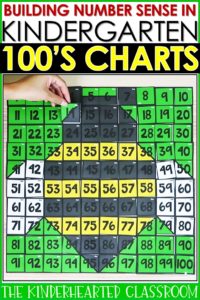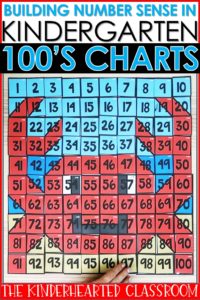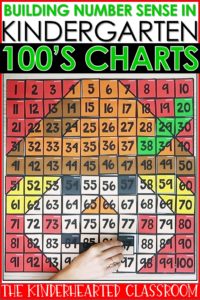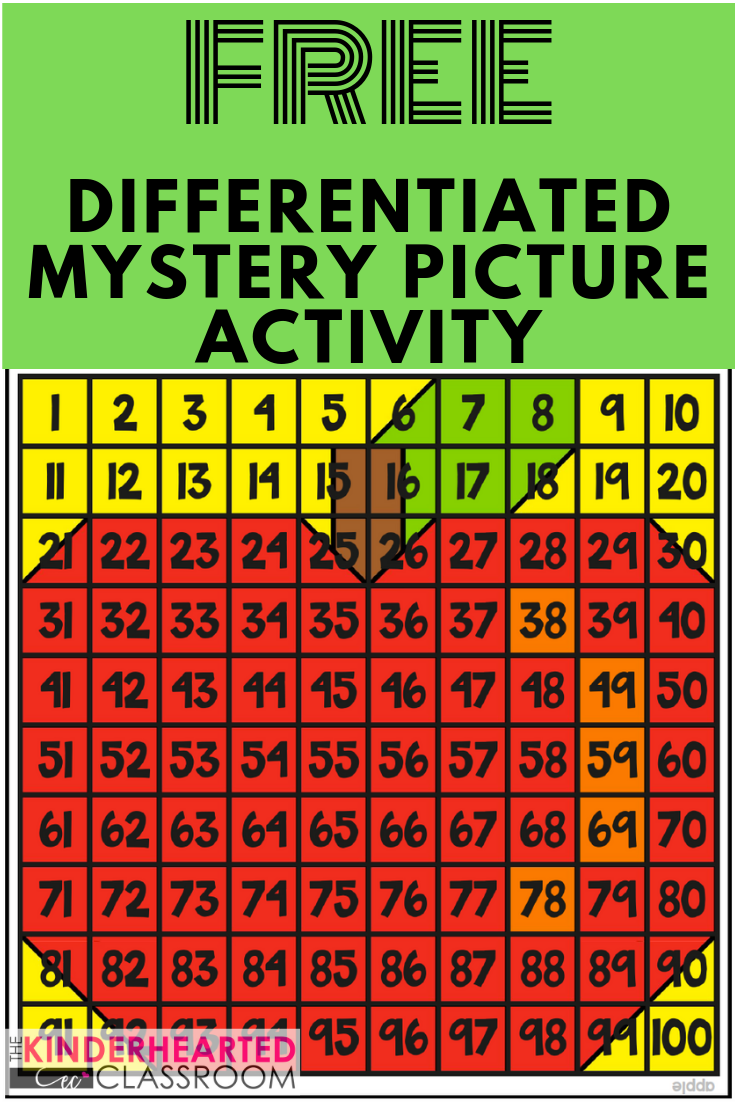We love sharing our favorite resources, books, classroom supplies and teacher stuff with you. When we do, we may earn money or products from the companies mentioned in this post. This does not affect our choices in what to recommend. Rest assured, we only recommend our favorite products to you! You can find our full advertising policy on the Partner With Elizabeth page.
Differentiated instruction is so important in the classroom to help students excel at their various learning levels. However, it can be very difficult to find activities that cover the same content while reaching students of all levels. Some activities can be differentiated but require a lot of teacher supervision and others require lots of prep time. Today I want to share about something that has made my life easier – differentiation using centers.
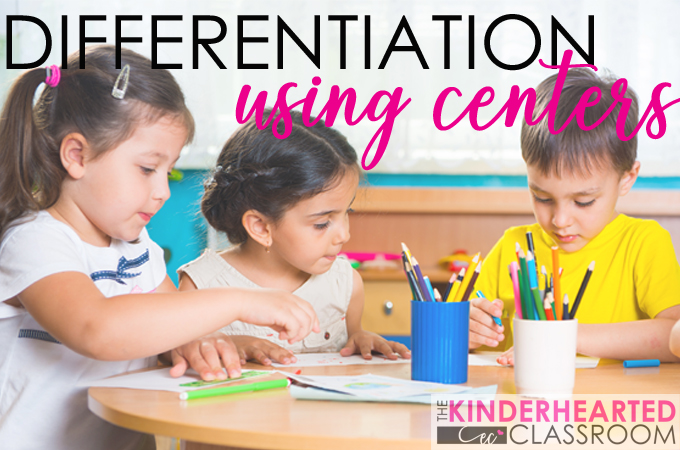
DIFFERENTIATION USING CENTERS
According to research, centers {also called stations} are one of the best ways to differentiate the learning experience for students. Stations can provide students with a rotation of several hands-on, independent activities thus freeing up the teacher to guide and connect with students in small groups or individually. Stations are a great way for students to practice and review skills through play and teamwork.
Check out this helpful video from Edutopia demonstrating rotating stations.
One of the things I love the most about using centers in my classroom is that they help teach my students how to learn and work independently. I can provide a variety of activities that keep them engaged while learning. I have also discovered that my students retain information better and have more fun in the learning process!
When my students rotate through centers, it gives me an opportunity to work with students individually or in small groups so that I can provide differentiated direct instruction. Forming small groups based on current instructional need is easy too.
For some classroom management and organization techniques, watch the video below to see how I use centers in my classroom.
Finding Great Center Activities
As a kindergarten teacher I am always brainstorming activities that can easily provide differentiated learning activities. When I am sucked into the time-warp known as Pinterest, I find lots of activities that would engage my students, but that alone is not enough. I begin to think about whether they could be used as a differentiated center activity. Here’s a short list of things I consider as I put together center activities for my classroom.
The activity should:
- be able to be completed or with only 2-3 people;
- promote independent thinking, problem solving, and/or teamwork
- review or practice a skill or concept we have learned in class
- be easy to explain and not require a large number of steps of processes
- have a long shelf life and by that I mean be able to be used multiple times without deteriorating
- be able to meet different learning levels in the same activity
If I find an activity that meets these goals then I know I can use it to meet my classroom goals. There are lots of center activities that do this.
When I was approached about collaborating on a new math resource, I knew that I wanted to make sure it met the goals above. I am so excited about these 100’s number chart mystery puzzles because they check all the boxes plus so much more!
These puzzles come in common seasonal themes and include both a digital and printable version. They are perfect for station time because they can be used in a variety of ways. Here are a few ideas of how to implement these in your classroom tomorrow!
HOW TO USE THEM IN THE CLASSROOM?
Digital Puzzles
The digital puzzles can be used in Powerpoint installed on devices or they can be uploaded to Google Drive and used in Google Slides.

As students scroll through each slide in the presentation they will see a number from the 100’s number chart to color on their response sheet.
Each digital puzzle comes in two versions to help you differentiate for your students. The first has the numbers ordered 1 to 100 and the second option has the numbers mixed up to provide more of a challenge.
Students could work individually or in small groups on their devices to complete a puzzle! The digital puzzles take about 20 minutes to complete so they are great to use if you have some other activities that take a little more time to work through.

Printable Puzzles and Mats
The printable mystery puzzles are a fantastic way for students to work together as they sort through the numbers and add them to the 100’s chart mat. They will love discovering the mystery picture as they practice putting numbers in order. Students can create the puzzle on the floor with the mat, in a 100’s number pocket chart, or on a table with a teacher.
In addition, you can also have the students color in a response sheet as they go! Each printable puzzle piece is also labeled with the mystery picture name to keep them from getting mixed up AND the number words are also listed for an additional number word recognition.

Differentiated Response Pages and Mats
To add another level of differentiation, there are several response coloring pages for each puzzle with missing numbers. Counting by 5’s, counting by 10’s, missing odd numbers, missing even numbers, and random missing numbers are included to provide a challenge for students or to use towards the end of the school year. Here’s an example of one puzzle and all the differentiated options available.
Students can fill in the missing numbers during a morning warm-up time and then color the mystery pictures during a station time. This strategy can also give the teacher a ready-to-go station for early finishers to go to after completing other work! The mats also include missing numbers to provide different ways to use these as a station.

BONUS: This resource includes twelve bonus number word practice pages to support number word recognition! Students can complete the worksheets during table time with the teacher and then work together to reveal a mystery puzzle!
Relay Races
Another fun way to use these mystery puzzles is with relay races. Start by splitting your class into teams and give each student a few numbers to place on the number chart mat. Students can use a complete 100’s chart mat or one of the mats with missing numbers. Students can line up and take turns placing their number(s) on the mat. The first team to complete their puzzle correctly wins!
Incentive Charts
We all love incentives that double as a review! These mystery pictures make a wonderful class incentive chart with a fun and engaging twist! Simply set up a pocket chart or one of the puzzle mats somewhere visible to your students. When students model great behavior give several students pieces of the mystery puzzle to place in the pocket chart. Students will love trying to guess the picture along the way. After all 100 cards have been placed, reward the class with a special activity and celebrate their great behavior.
Give it a Try!
I know that your students will love these hundreds chart mystery pictures. Why don’t you give it a try with this free mystery picture. You can find this free activity in the Members Only Section of the Website. Just click below to Join and get free access to this and other freebies!
If you do not have time in your busy teaching schedule to create your own versions of these 100’s chart number mystery puzzles you can grab the complete bundle (over 5,600 pages) here:
Differentiation Using Centers
So as you can see, its not so hard to provide fun, engaging and differentiated activities in your classroom. Whether you create your own, get inspired from Pinterest, or grab these and other ready made centers from Teachers Pay Teachers, I know that you will see a difference in your students overall learning. Differentiation – its a big word and sometimes scary to think about – but it works!
Pin it Now – Use it Later!
